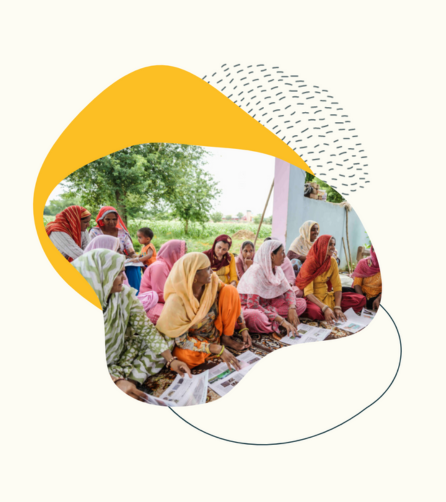Dziewuchy Dziewuchom (Girls for Girls) is a Polish Intersectional Feminism Foundation. Their team wanted to create a safe space to share resources online. Tech To The Rescue connected the foundation with Boldare, a design and digital product development company, which quickly got to work to find a solution.
We spoke to Karla Sutil, Problem Solution Fit Guide at Boldare, to find out more about how the partnership started, what solutions were proposed, and how the product evolved.
Where did you hear about Tech To The Rescue and why did you decide to get involved?
We’ve been interested in the democratization of technology for some time now, and we wanted to discover new ways to use it for social good. TTTR matched us with Dziewuchy Dziewuchom (Girls for Girls), which I have to say was a really good choice. We immediately understood their mission, vision and challenges.
When you joined the project, what were the main goals?
The main goal was to create a safe online space for sharing knowledge, education, experience, and resources on feminism and beyond. It’s important to remember that it was intended to be a private space, as opposed to social media. The group found that social media wasn’t the right place to share information, mainly because of the unwanted backlash that some of the materials received from opponents of the movement. They wanted to create a professional space where they could share materials that were important to them. It wasn’t a place to discuss whether or not feminism should exist so it was not an open forum.
Great, and did the foundation have a clear vision of what they wanted this space to look like? Or did they present you with the general need and ask you for a solution?
We started with a discovery process, which is usually the first step of any customer journey for us at Boldare. We looked at the product requirements, the general needs of the foundation, the hypotheses we wanted to test, the success criteria, and so on. The meeting took place in person in Warsaw and was a brilliant experience for our team.
So what were the outcomes of this process? What did the final product look like?
We had several ideas about what technology to use. Essentially, we created a new page on an existing domain that – to make things even more interesting – had once been hacked, and all of its content removed. So security was high on our agenda, but at the same time we wanted to balance security with usability. We wanted to make sure that in the future, the foundation wouldn’t have to hire a developer every time they wanted to make a change.
Our options were to create a custom page which would probably be the best fit for the foundation’s needs, but was also expensive to build and maintain. The second option was to create a no-code website based on Webflow, but we realized that even this could be a limitation as someone within the foundation would have to learn how to use the platform.
We knew that the president of the foundation, Agata, was proficient with WordPress, so our choice ultimately fell on that platform. It’s a platform that’s well suited to storing information, having discussions, answering questions, and so on. We don’t usually work with WordPress, but we decided to make an exception for Dziewuchy, as it was clearly the right solution for them.
How long did the project take from discovery to delivery?
I think l it was around three months in total. But that was the whole product development, including the entire thought process that led to creation. So it wasn’t just pure development time. We also carefully onboarded the foundation’s team, so they knew exactly how to use the platform. . At first, Dziewuchy decided that the entry point for the whole project would be through a newsletter, and it remains their decision as to when they will launch the entire product.
Photo taken during the joint workshops – courtesy of Boldare.
Is there anything that surprised you during the product process?
It was all a pleasant surprise. We got along very well and I felt from the beginning that we were working as a team. Even when representatives of the foundation weren’t available to give feedback on particular product elements, we continued working on them, because we felt we understood their vision and goals.
Who else was involved in the product team apart from you?
I was the Product Owner, Aneta Rybka was the Product Strategist, Maciek Imiełowski was our first developer, Sylwia Pechcin was our Product Designer, then Ilo Górska, Mateusz Niewiara and Krystian Kulesz joined us to finished the project. When someone had to be recalled for a commercial project, we made sure that it didn’t stop the development process, as that person would be replaced, and we ensured that there was a good handover.
Did you receive any feedback from Dziewuchy Dziewuchom? Because I understand that although they had prior experience of WordPress, they may not have worked with a software house before?
We completed the project on a very positive note and we’re very good friends with the foundation. They gave us excellent feedback and said they would recommend us to all the NGOs they work with. We also had a party with them to celebrate the delivery of the product, which was excellent.
Is there anything else that you would like to add about the project?
Just that projects like this really boost our team’s morale. It’s not the first project that we’ve worked on with Tech To The Rescue, and it definitely won’t be the last!



Lorem ipsum dolor sit amet, consectetur adipiscing elit. Sed volutpat auctor eleifend. Curabitur eu finibus turpis.

Lorem ipsum dolor sit amet, consectetur adipiscing elit. Sed volutpat auctor eleifend. Curabitur eu finibus turpis.



